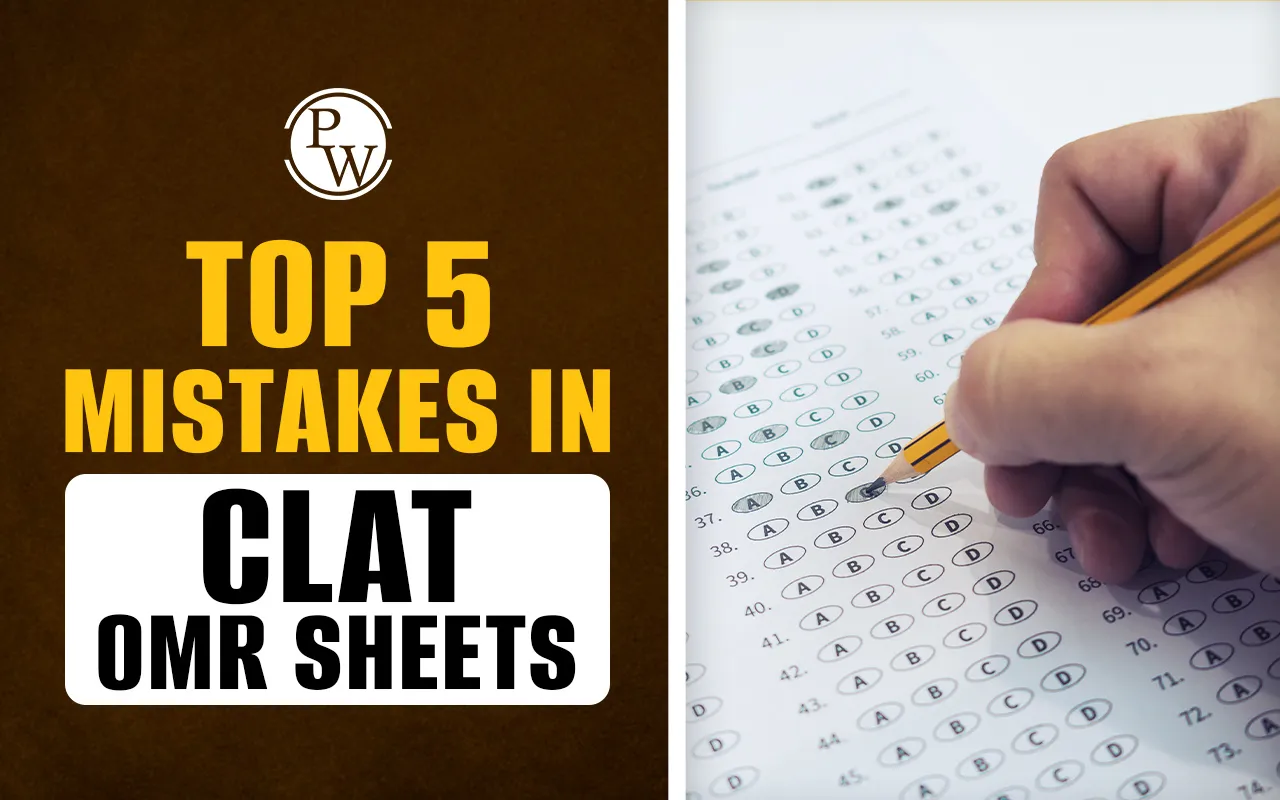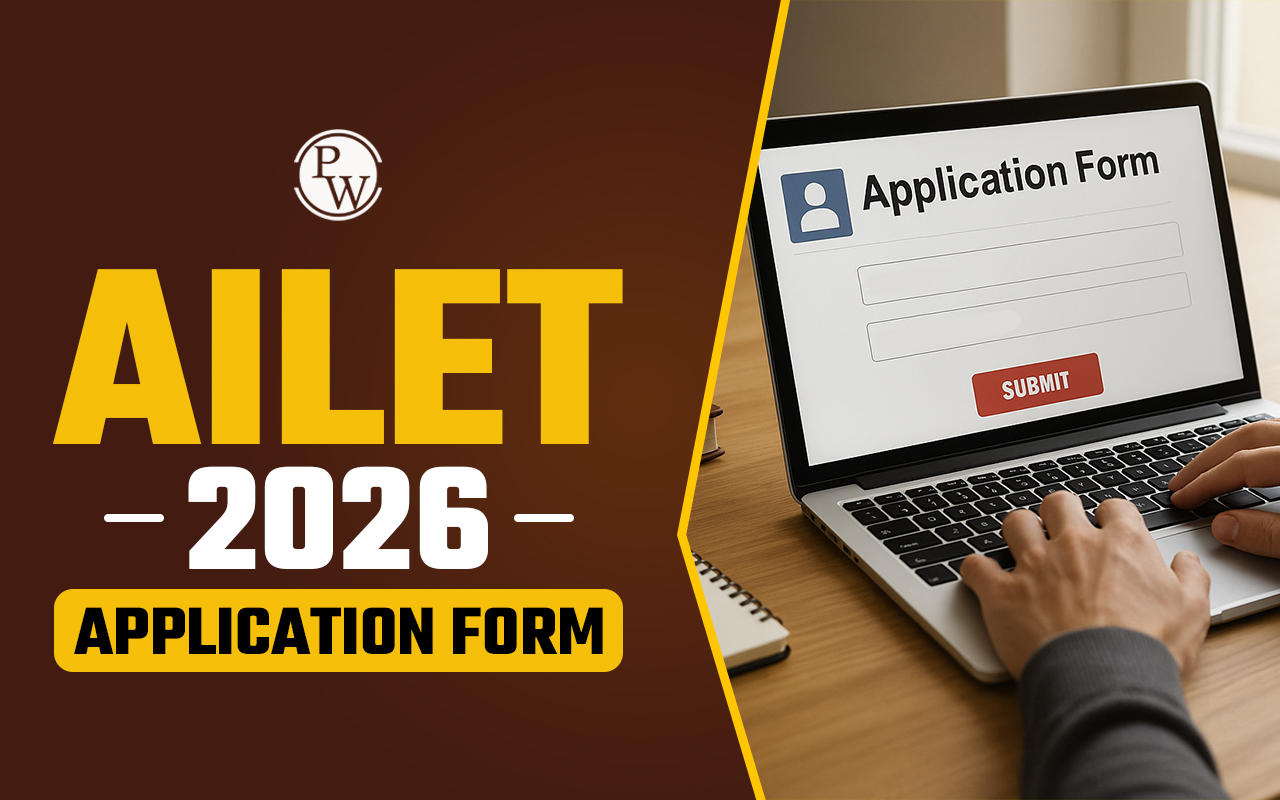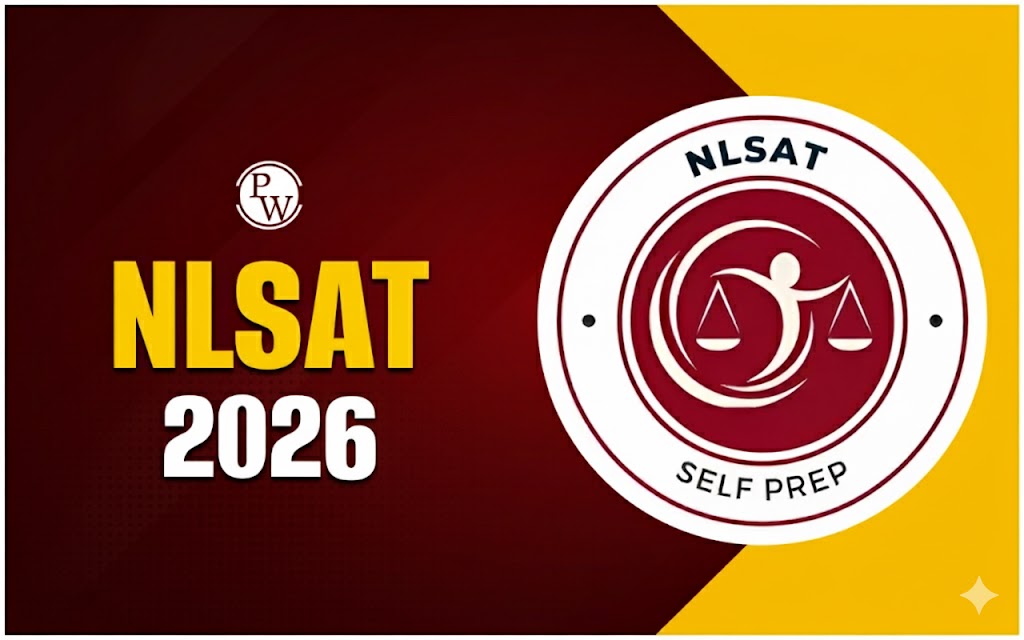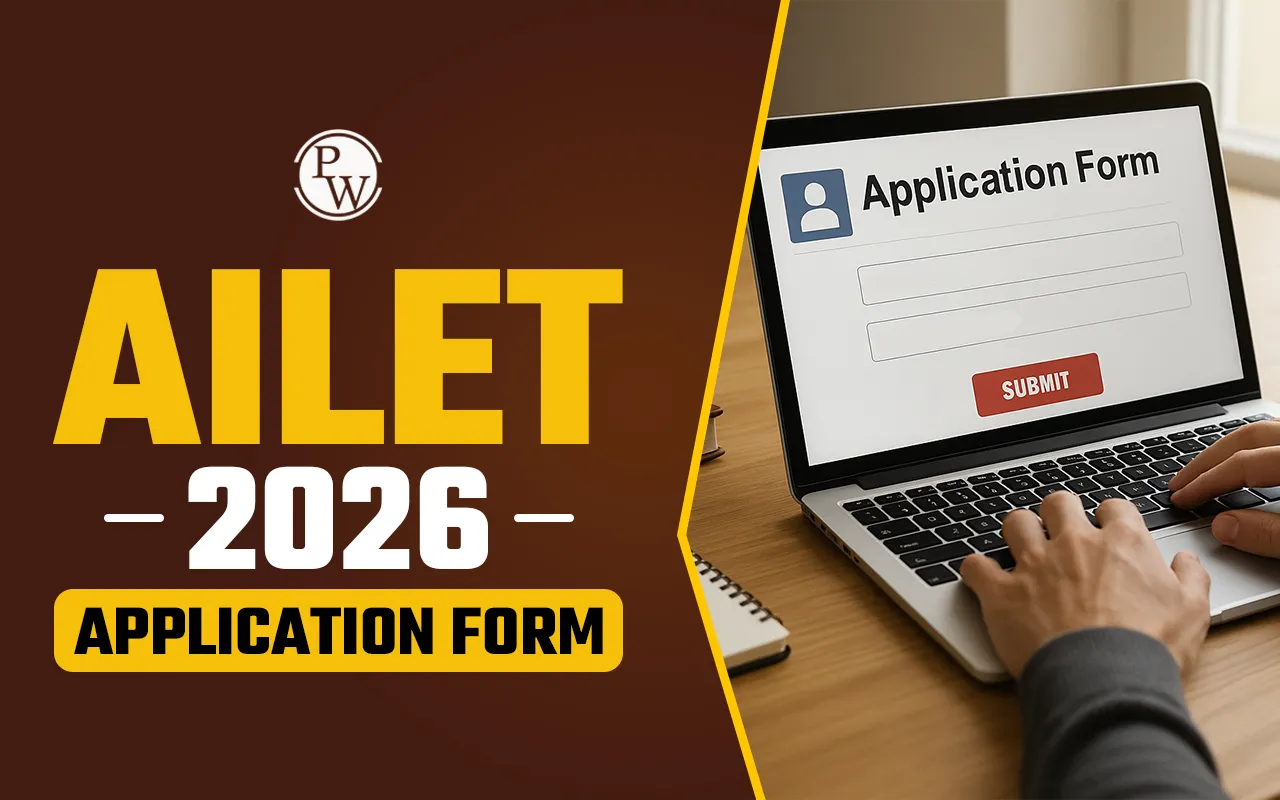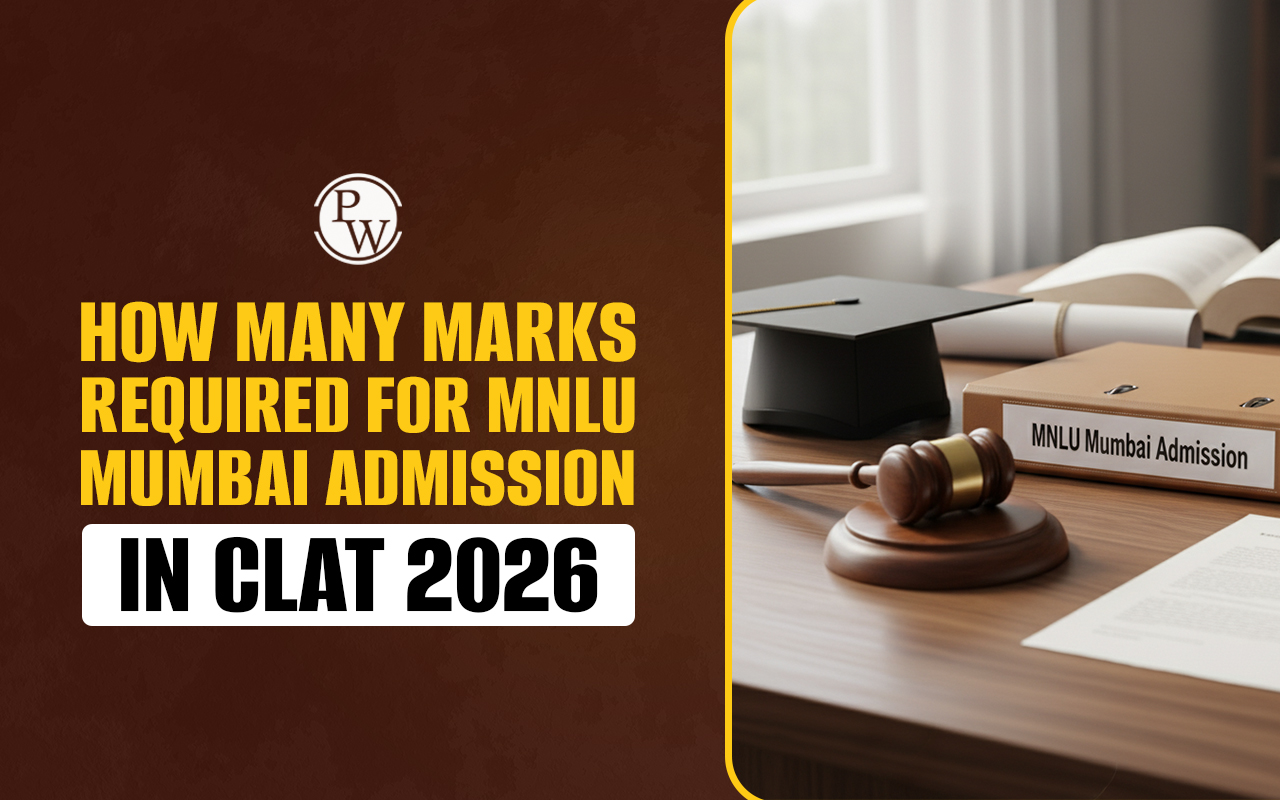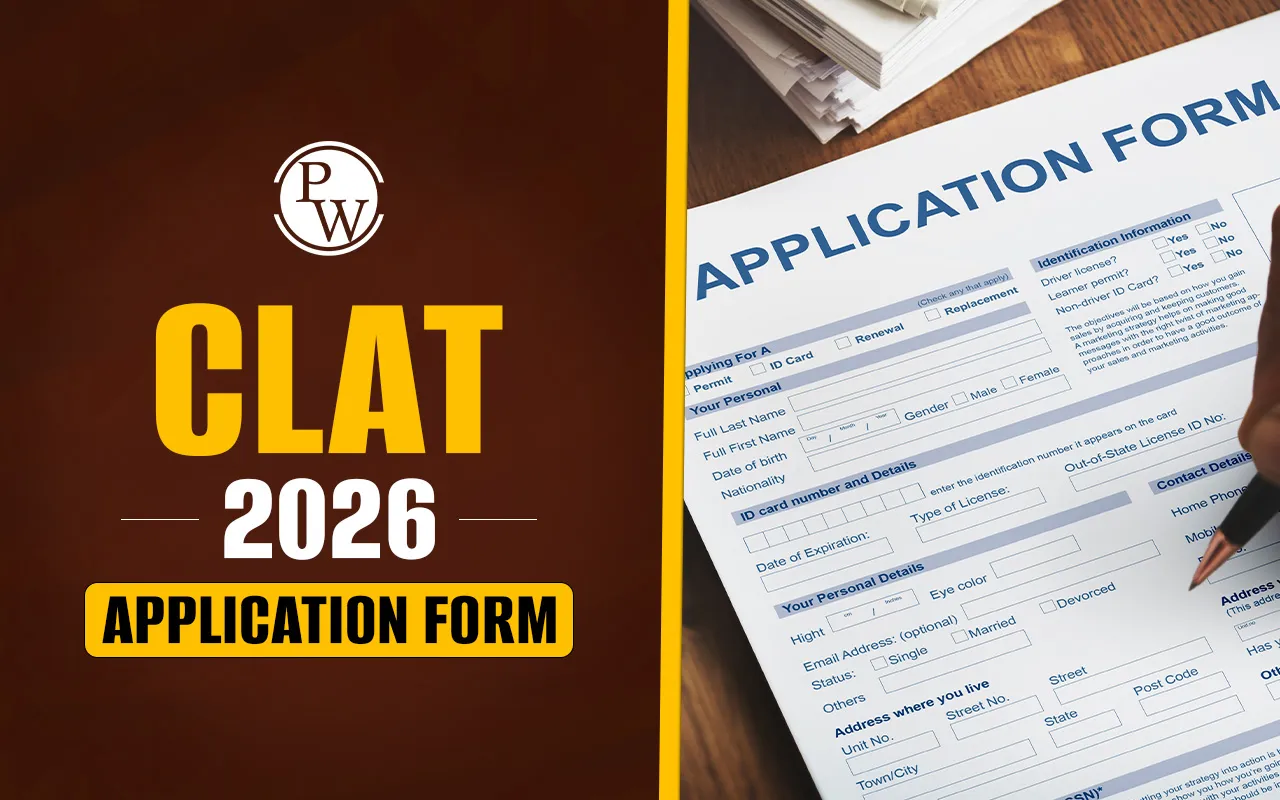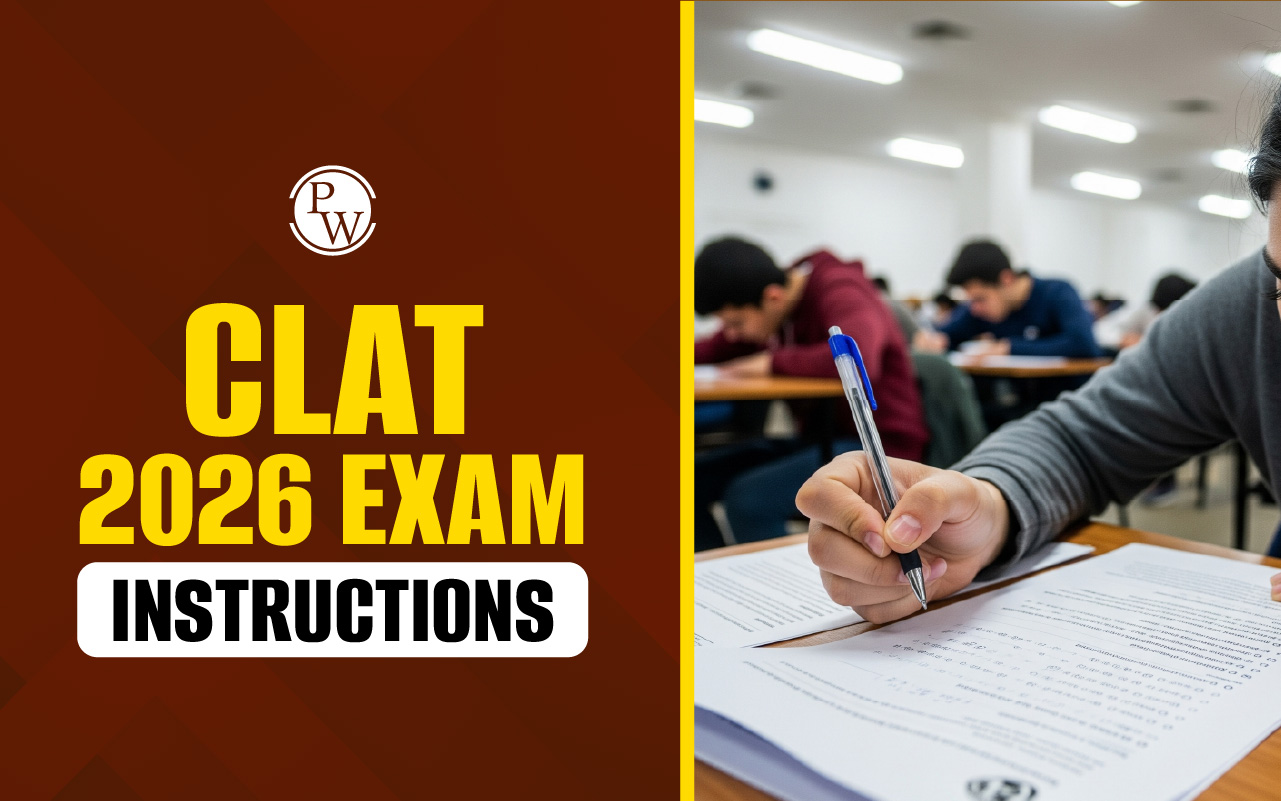
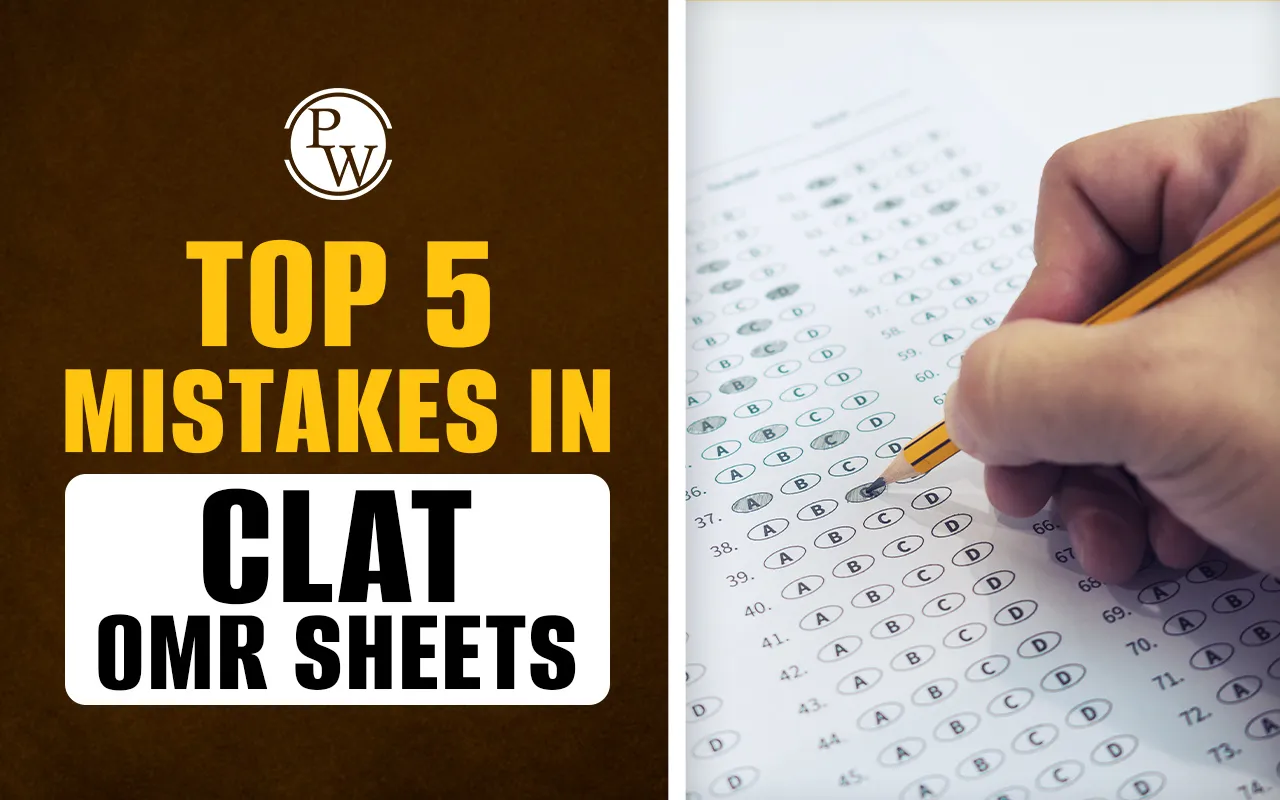
Mistakes in CLAT OMR Sheets That Can Cost You a Rank: Filling out the CLAT OMR sheet is very important for CLAT aspirants, as it directly impacts their score. Even minor mistakes can lead to incorrect evaluation or disqualification of your answers. The OMR sheet is machine-read, so errors like marking multiple answers, misaligning question numbers, stray marks, or incomplete bubbling can cause your responses to be rejected or misinterpreted. Being careful while filling the OMR sheet is essential because these sheets are highly sensitive; any mistake can cost you a rank. Practicing with sample OMR sheets and following instructions precisely helps ensure your hard work is accurately reflected in your results.
Checkout Law Books from PW Store
What is a CLAT OMR Sheet?
A CLAT OMR sheet (Optical Mark Recognition sheet) is a specially designed answer sheet used in the Common Law Admission Test to record candidates’ responses by filling pre-printed bubbles corresponding to each question and answer choice.
Candidates must use a blue or black ballpoint pen to fill in the appropriate bubble for their chosen answer, as the sheet is machine-scanned for evaluation. Accurate and careful filling of the OMR sheet is important, since even minor mistakes, such as stray marks, incomplete shading, or marking multiple answers, can cost you a rank.
CLAT OMR Sheets Layout
The CLAT 2026 OMR Sheet is divided into three sections that candidates must fill out carefully.
1. Answer Selection Section
- It consists of rows for each question number, with four columns labeled A, B, C, and D representing the answer options.
- Candidates must completely darken the bubble corresponding to their chosen answer using a blue or black ballpoint pen.
- Ensure that there are no stray marks or multiple selections for any question.
2. Correct Marking Method
- Candidates must use only a blue or black ballpoint pen to completely darken the bubble corresponding to their chosen answer.
- Only one bubble should be marked per question. Avoid multiple markings or partial shading, as this may be considered invalid and may lead to negative marking or cost you a rank.
3. Incorrect Marking Schemes
- This includes partially filled or faint bubbles, marking more than one option for a single question, stray marks, overwriting, and using pens other than blue or black ballpoint.
- To avoid these issues, candidates must fill only one bubble per question, darken it completely, and keep the sheet free from extra marks or damage.
How to Fill OMR Sheets for CLAT 2026?
The following steps can be handy for CLAT 2026 aspirants while filling out the OMR sheets for CLAT 2026.
- Use Only the Correct Pen: Fill all bubbles using a blue or black ballpoint pen. Do not use gel pens, pencils, or markers, as these can cause scanning errors.
- Completely Darken the Bubble: Mark your chosen answer by fully darkening the corresponding bubble (A, B, C, or D) for each question. Avoid partial shading, stray marks, or overwriting.
- Mark Only One Option Per Question: Fill in only one bubble per question. Marking more than one option will render the answer invalid and may cost you your rank.
- Match Question Numbers Carefully: Double-check that the question number on the OMR sheet matches the one in your question paper before marking your answer to avoid misalignment.
- Keep the Sheet Clean: Do not fold, tear, or damage the OMR sheet. Avoid making stray marks or writing outside the designated areas, and keep the sheet free from smudges.
- Fill Mandatory Details Accurately: Enter all required personal information (name, roll number, etc.) in the identification section at the top of the sheet and verify before submission.
- Review Before Submission: Check your OMR sheet for any errors, missed answers, or incomplete bubbles before handing it over to the invigilator. Practice with sample OMR sheets to build speed and accuracy.
Top 5 Mistakes in CLAT OMR Sheets That Can Cost You a Rank
Being careful while filling the OMR sheet is crucial because even minor mistakes can directly impact your score and overall CLAT rank, regardless of how well you know the answers. The following are some common mistakes that candidates must avoid while filling out the CLAT OMR sheets.
- Not filling the bubbles: Partially filled or lightly marked bubbles may not be read by the scanner, resulting in your answer being marked as incorrect.
- Marking multiple answers for one question: If more than one bubble is filled for a single question, that response will be considered invalid and result in negative marking.
- Incorrect alignment of question numbers: Failing to match the question number in the booklet with the OMR sheet can lead to misaligned answers and incorrect evaluation.
- Making stray marks or overwriting: Avoid overwriting or using correction fluid. This can confuse the scanner and potentially invalidate your answer or the entire sheet.
- Mishandling the OMR sheet: Folding, tearing, or damaging the OMR sheet can cause scanning errors or rejection of your responses.
Appropriate Way to Fill CLAT OMR Sheets
One of the important aspects that candidates must mind while filling out the CLAT OMR sheets is to fill it section by section. Some relevant pointers that candidates can adopt as a strategy to fill OMR sheets for CLAT 2026 are mentioned below.
1. Fill After Each Question
- Candidates must try to mark the answers immediately after solving each question. This would reduce the risk of forgetting and avoid last-minute errors.
2. Fill After Each Section
- Once you have completed a particular section in CLAT, mark all the answers. This will reduce mismatched numbers.
3. Fill at the End of Paper
- Candidates can also first attempt the entire test and solve all sections, and then mark their answers on the OMR sheets. Be watchful of the time to ensure that you do not leave unfilled responses.
How is CLAT OMR Sheet Evaluated?
CLAT OMR sheets are evaluated using Optical Mark Recognition (OMR) technology, which scans and detects the darkened bubbles corresponding to each candidate’s answers. The process involves the following steps.
- Scanning: The OMR sheet is fed into a scanner that reads the marked bubbles based on their shape and opacity, ensuring only properly filled bubbles are considered.
- Answer Matching: The system matches each marked response with the official answer key provided by the Consortium. Each answer is validated for accuracy.
- Scoring: For every correct answer, candidates receive +1 mark. For every incorrect answer, 0.25 marks are deducted as per the negative marking scheme. Unanswered questions receive no marks.
- Double Marking: If more than one bubble is marked for a single question, it is treated as incorrect, and negative marking is applied.
- Error Checks: The system checks for issues like stray marks, incomplete personal information, or mismatched question numbers. Sheets with significant discrepancies may be flagged for manual review.
- Score Calculation and Ranking: The total score is calculated, and candidates are ranked in descending order. In case of a tie, tiebreaker rules such as higher age or better Legal Reasoning scores are applied.
- Result Publication: Final scores and ranks are uploaded to the official website for candidates to access.
Top 5 Mistakes in CLAT OMR Sheets That Can Cost You a Rank FAQs
What happens if I mark more than one bubble for a question?
How important is it to completely darken the bubbles?
Can stray marks or writing outside the bubbles affect my score?
What if I misalign the question number and answer bubble?
What should I do if I make a mistake while marking an answer?

